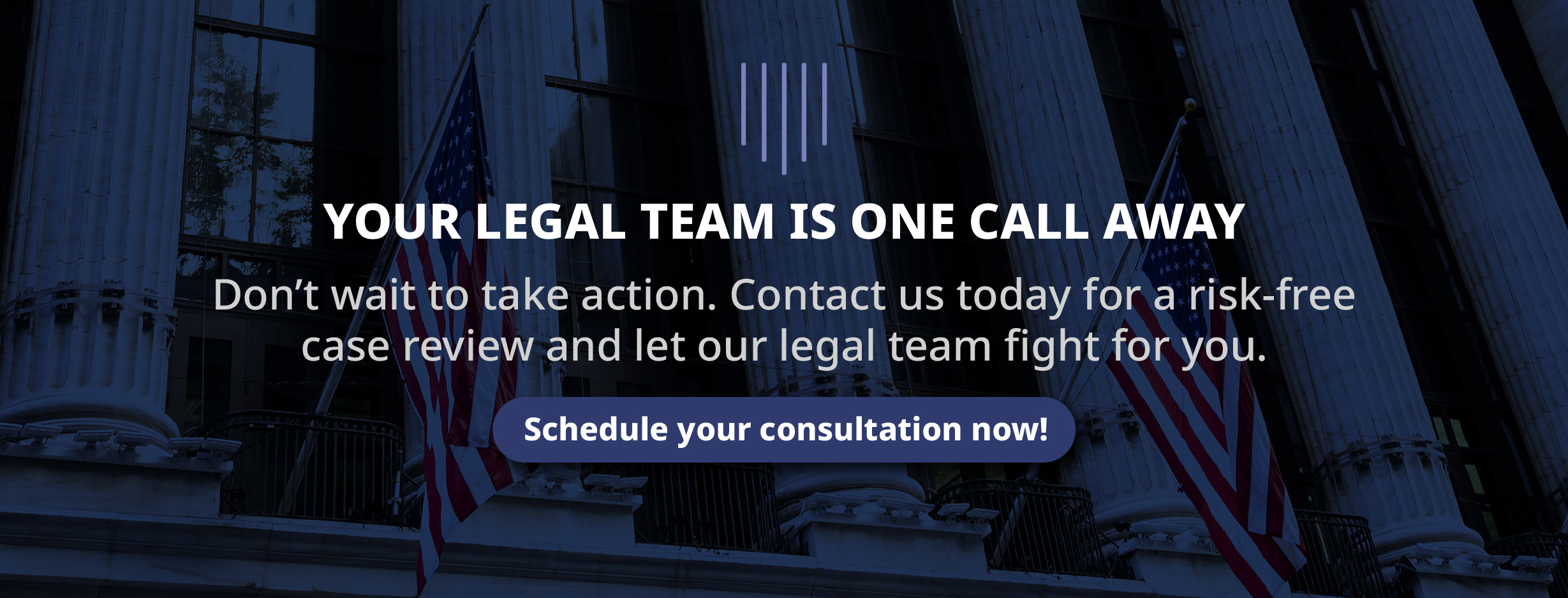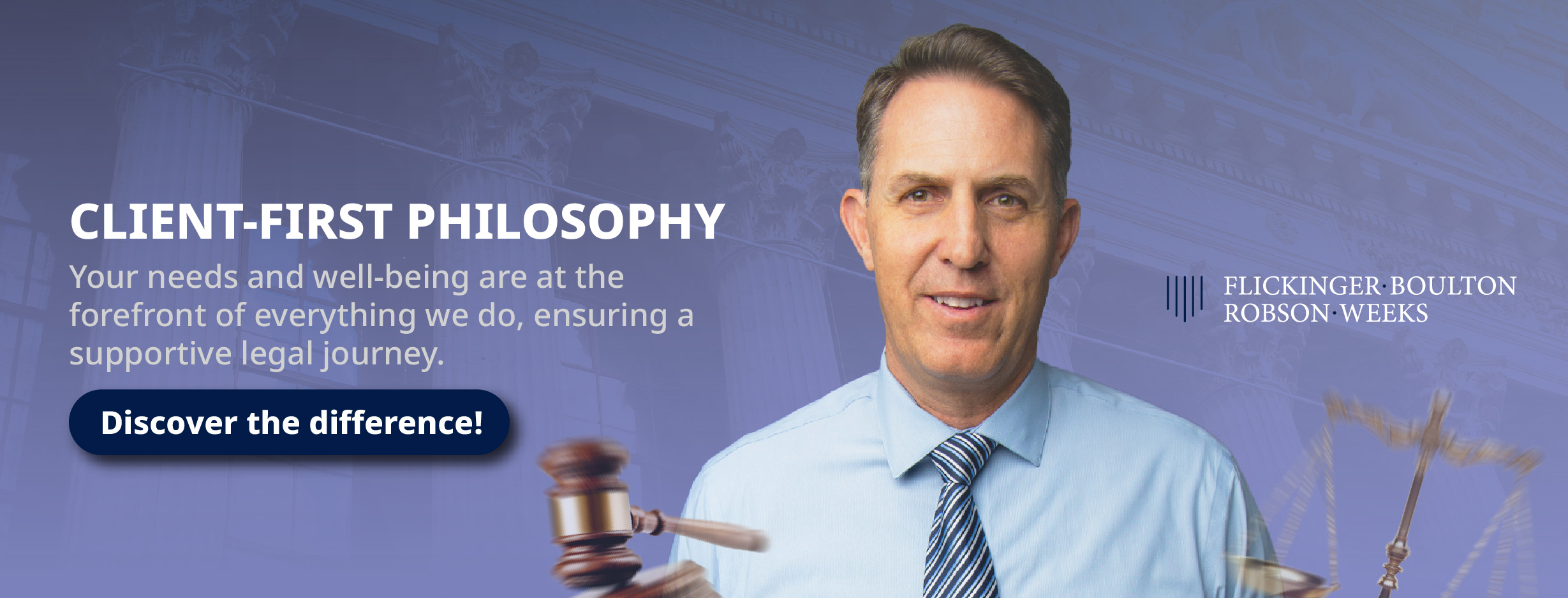¡Hablamos Español!
Filing a motorcycle accident claim in Utah can be a complex process, especially when dealing with insurance companies, legal deadlines, and proving liability. Understanding how the legal process works can help injured motorcyclists take the right steps to secure fair compensation for their medical expenses, lost wages, and other damages.
At Flickinger Boulton Robson Weeks, our experienced Utah motorcycle accident lawyers guide you through every stage of your claim, from gathering evidence and negotiating with insurers to representing you in court if necessary.
We are committed to protecting your rights and ensuring you receive the compensation you deserve. Contact us today to learn how we can help you navigate the legal process and fight for your best interests.

After a motorcycle accident in Utah, filing a claim properly and on time is crucial to securing the compensation you need for medical expenses, lost wages, and other damages. Understanding the legal steps and deadlines can help you navigate the process effectively and avoid costly mistakes.
Below is a breakdown of the key steps and timelines involved in filing a motorcycle accident claim in Utah.
The first and most important step after a motorcycle accident is to seek medical attention, even if the injuries seem minor. Some injuries, such as concussions or internal damage, may not show symptoms right away.
Getting medical care also provides official documentation of your injuries, which is critical for your claim.
Under Utah law, you must report any accident that results in injury, death, or property damage exceeding $2,500. You should:
If you are physically able, collecting evidence from the accident scene can help strengthen your claim. This includes:
If you are unable to gather evidence, an attorney can work to obtain surveillance footage, accident reconstructions, and other supporting documentation.
You must inform your insurance company about the accident as soon as possible, usually within a few days. However, keep the details brief and avoid admitting fault. Insurers often try to minimize payouts, so it’s best to consult an attorney before giving a detailed statement.
In Utah, the statute of limitations for filing a motorcycle accident claim depends on the nature of the case:
Failing to meet these deadlines may result in losing the right to pursue compensation.
Having legal representation can make a significant difference in your claim. A motorcycle accident attorney can:
At Flickinger Boulton Robson Weeks, we guide motorcyclists through every step of the legal process to ensure they receive the maximum compensation available.

Strong evidence is the foundation of a successful motorcycle accident claim in Utah. Whether negotiating with insurance companies or presenting your case in court, having clear and compelling proof can help establish liability, demonstrate the extent of your injuries, and maximize your compensation.
Below are key types of evidence and strategies to strengthen your claim.
The best time to collect evidence is immediately after the crash if you are physically able. Important information includes:
If you are unable to collect evidence at the scene, an attorney can help retrieve surveillance footage or conduct an independent investigation.
A police report is one of the most valuable pieces of evidence in a motorcycle accident case. Officers document their observations, witness statements, and any citations issued, which can help establish fault. Be sure to request a copy of the report as soon as it becomes available.
Proving the extent of your injuries is critical to securing full compensation. Keep records of:
Additionally, keeping a personal injury journal to document pain levels, emotional distress, and mobility limitations can support claims for pain and suffering damages.
In some cases, expert opinions can strengthen your claim, such as:
Keep copies of emails, letters, and recorded conversations with insurance adjusters. Insurers often try to minimize payouts, so documenting all interactions ensures you have a record of offers, denials, and misleading tactics.
The stronger your evidence, the better your chances of securing fair compensation. At Flickinger Boulton Robson Weeks, we help motorcyclists gather and present compelling evidence to support their claims. Contact us today for a free consultation to discuss your case.
After a motorcycle accident, injured riders have two primary options for seeking compensation: negotiating a settlement with the insurance company or filing a lawsuit and going to court. Each approach has its benefits and challenges, and choosing the right path depends on the details of your case.
Below is a comparison of negotiation vs. litigation, outlining the pros and cons of each.
Negotiation is the most common way to resolve a motorcycle accident claim. This process involves working with the insurance company to reach a fair settlement without going to trial.
If settlement negotiations fail, filing a lawsuit may be necessary to pursue fair compensation. Litigation involves presenting evidence before a judge or jury to determine the outcome.

The decision between negotiation and litigation depends on factors like:
At Flickinger Boulton Robson Weeks, we are skilled in both negotiation and litigation, ensuring our clients receive the best possible outcome. If you need help after a motorcycle accident, contact us today for a free consultation.
If negotiations with the insurance company fail and your motorcycle accident case proceeds to litigation, understanding the legal process can help you prepare for what lies ahead. The court system follows a structured process, and each stage plays a crucial role in determining the outcome of your claim. Below is an overview of what to expect during the legal proceedings in a motorcycle accident lawsuit.
The legal process begins when your attorney files a complaint in court against the at-fault party (defendant). This document outlines:
Once the complaint is filed, the defendant is formally served with the lawsuit and given time to respond.
The defendant (or their insurance company’s attorney) will file an answer to the lawsuit. They may:
This stage sets the foundation for contested issues in the case.
Discovery is one of the most important phases in a lawsuit, as both sides exchange evidence and information related to the case. During this stage, you can expect:
Discovery ensures that both sides have access to key facts before going to trial.
Before the trial begins, both sides may file motions to resolve issues such as:
At this stage, settlement discussions often continue. Many cases settle before trial, as insurance companies may offer higher payouts to avoid court costs.
If a settlement is not reached, the case moves to trial, which may involve:
A judge or jury will then decide the outcome, including how much compensation you will receive.
Once a decision is made, the judge or jury issues a verdict determining fault and awarding compensation. If the outcome is unfavorable, either side may file an appeal, extending the legal process.
Legal proceedings can be complex and time-consuming, but having an experienced attorney can help protect your rights and maximize your compensation. At Flickinger Boulton Robson Weeks, we guide our clients through every step of the legal process. Contact us today for a free consultation.